Knowde Enhanced TDS
Identification & Functionality
- Chemical Name
- Pharma & Nutraceuticals Functions
- CAS No.
- 191732-72-6
- EC No.
- 691-297-1
- Technologies
- Product Families
- Chemical Structure
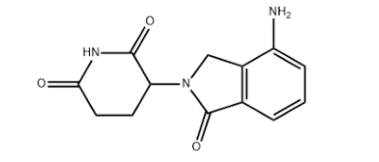
Applications & Uses
- Markets
- Application and Mechanism of Lenalidomide
Lenalidomide can be used in the treatment of various of cancers and anemia in patients with certain blood/bone marrow disorders. More information is as follow:
Multiple myeloma (MM):
Lenalidomide, an immunomodulatory drug, is the first oral medication that was developed for treatment of multiple myeloma. It is used in the newly diagnosed, maintenance therapy, and relapsed and/or refractory settings.
The proposed mechanisms of action of lenalidomide in multiple myeloma include immune modulation (A); interference with tumor microenvironment interactions (B); and direct antitumor effects (C). (A) Immunomodulation by lenalidomide includes T cell co-stimulation, suppression of Tregs, increased production of Th1 cytokines, and activation of NK and NKT cells. (B) Lenalidomide mediates disruption of myeloma cell-microenvironment interactions via several mechanisms including antiangiogenesis, anti-inflammatory effects, antiosteoclastogenic properties, modulation of cytokine production, and downregulation of adhesion molecules. (C) IMiDs also exert direct effects on myeloma cells via cell cycle arrest and induction of apoptosis.
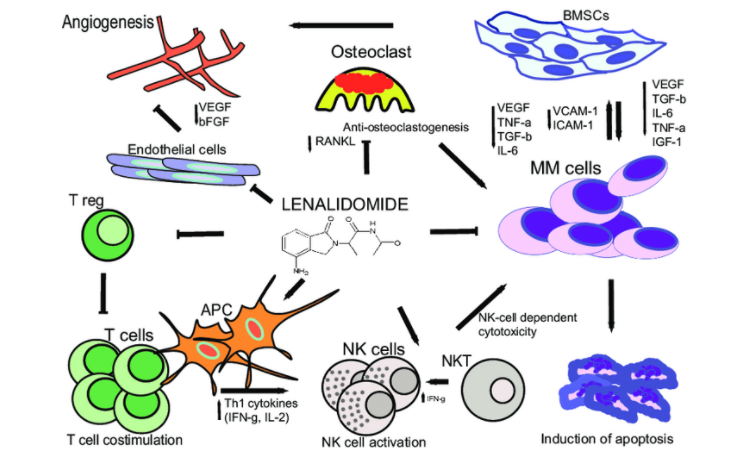
Mantle cell lymphoma (MCL):
Extensive research led the permission of lenalidomide for MCL patients whose disease has relapsed or progressed after two prior therapies. Figure below shows the types of MCL.
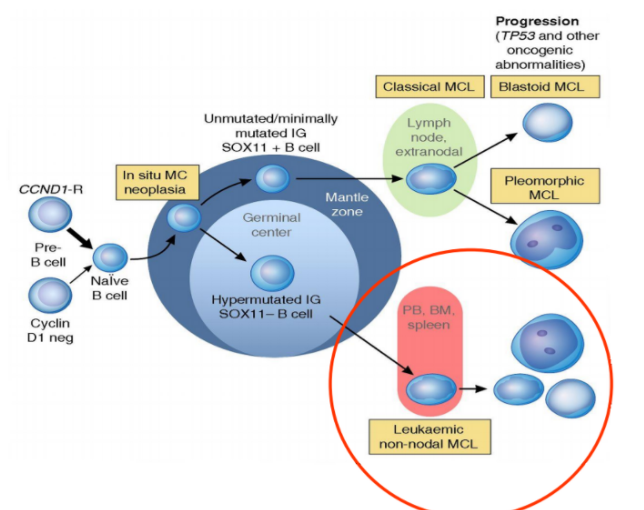
Lenalidomide stimulates proliferation and activation of antitumor T cells effective against MCL cells. Lenalidomide inhibits interleukin-1β (IL-1β) and TNF-α induced activation of IκB kinase (IKK) from nuclear factor-κB (NF-κB), preventing its nuclear translocation and induction of genes that function in metastasis, angiogenesis, cellular proliferation, inflammation and protection from apoptosis. Further, lenalidomide exhibits significant anti-angiogenic effects including interaction with tumor microenvironment, endothelial cells and vascular endothelial growth factor (VEGF). Recently it was also found that tumor lymphangiogenesis contributes to the progression of lymphomagenesis and that lenalidomide is effective in decreasing MCL growth specifically and metastasis by inhibiting recruitment of MCL-associated macrophages.
Follicular lymphoma (FL) or marginal zone lymphoma (MZL):
Lenalidomide in combination with a rituximab can be used in the treatment of Follicular lymphoma (FL) and marginal zone lymphoma (MZL).
The most prominent mechanisms of action of lenalidomide in lymphoid malignancies appear to be immunomodulatory, antiproliferative, and antiangiogenic.
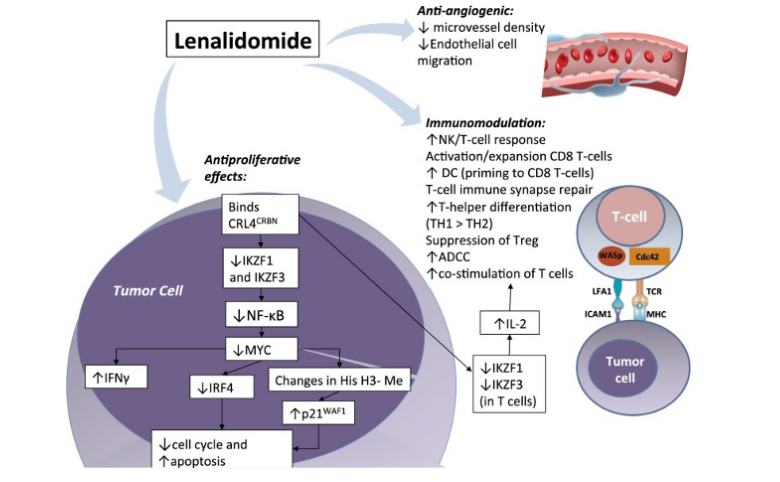
Myelodysplastic syndromes (MDS):
Lenalidomide is an immunomodulatory, anti-cytokine and anti-angiogenic agent, which leads to red blood cells transfusion independence in patients of lower risk MDS with del(5q).
The dual biological effect of lenalidomide (clonal eradication and promotion of erythropoiesis) is mediated by (A) clonal-dependent mechanisms which are augmented by clonal-independent mechanisms (B). Lenalidomide directly inhibits CDC25C resulting in G2/M arrest and contributing to clonal eradication. it indirectly inhibits PP2A leading to the accumulation of the stable hyperphosphorylated form of MDM2 despite its continued binding to free ribosomal proteins, leading to p53 degradation.
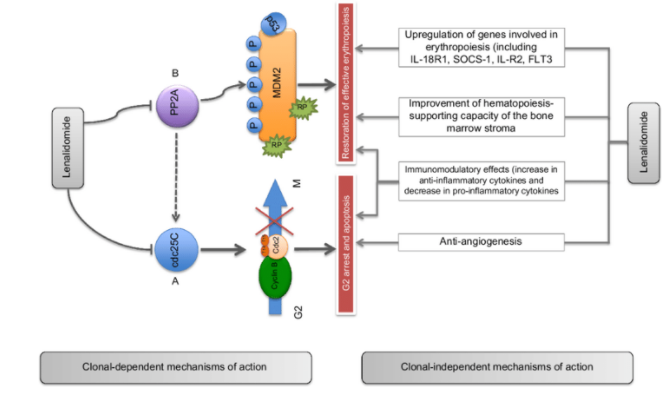
Alfa Chemistry offers high quality of lenalidomide which meets the CP, EP & USP.
Properties

